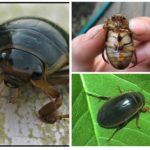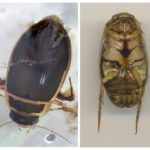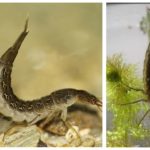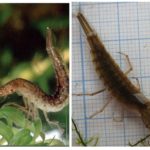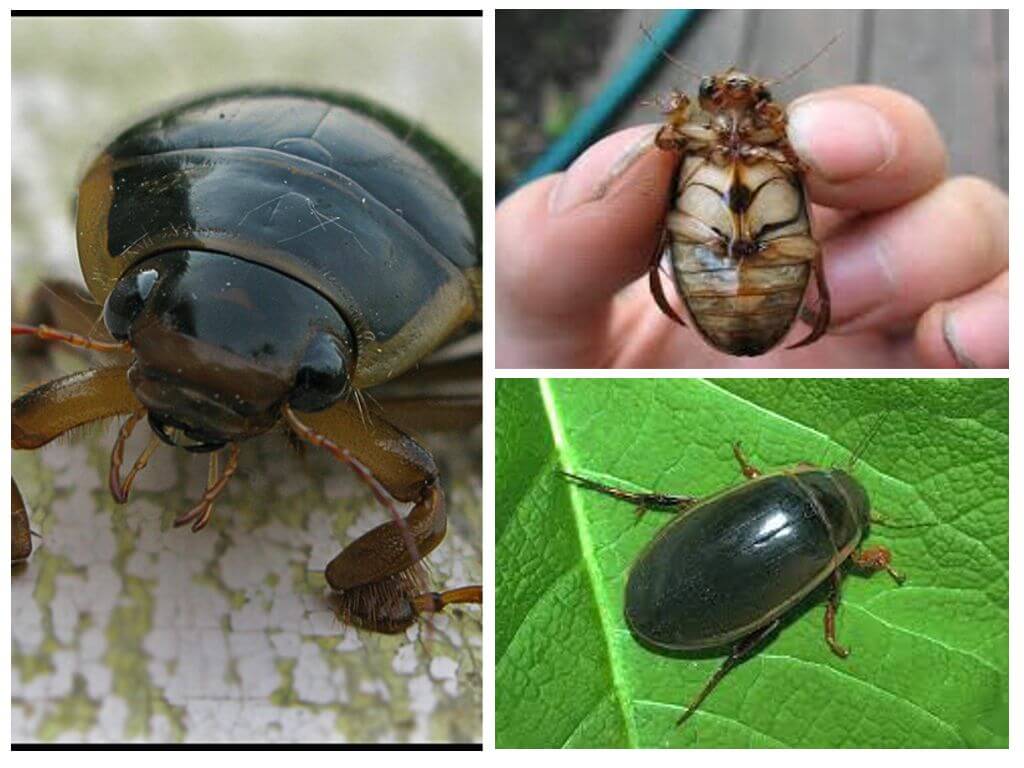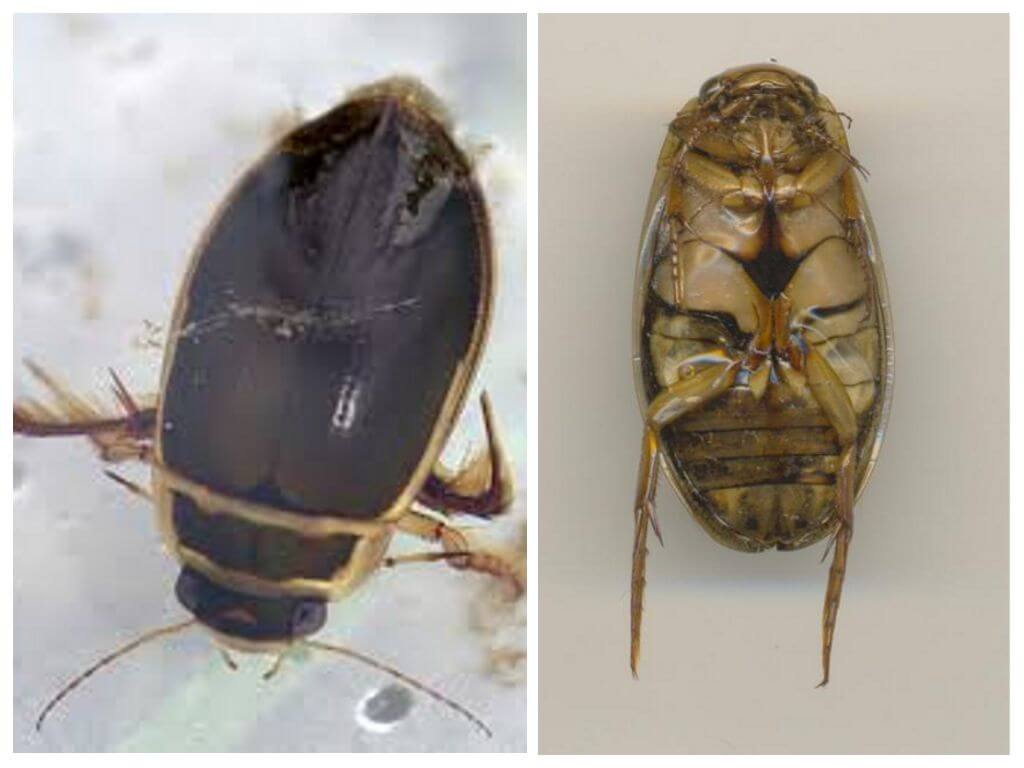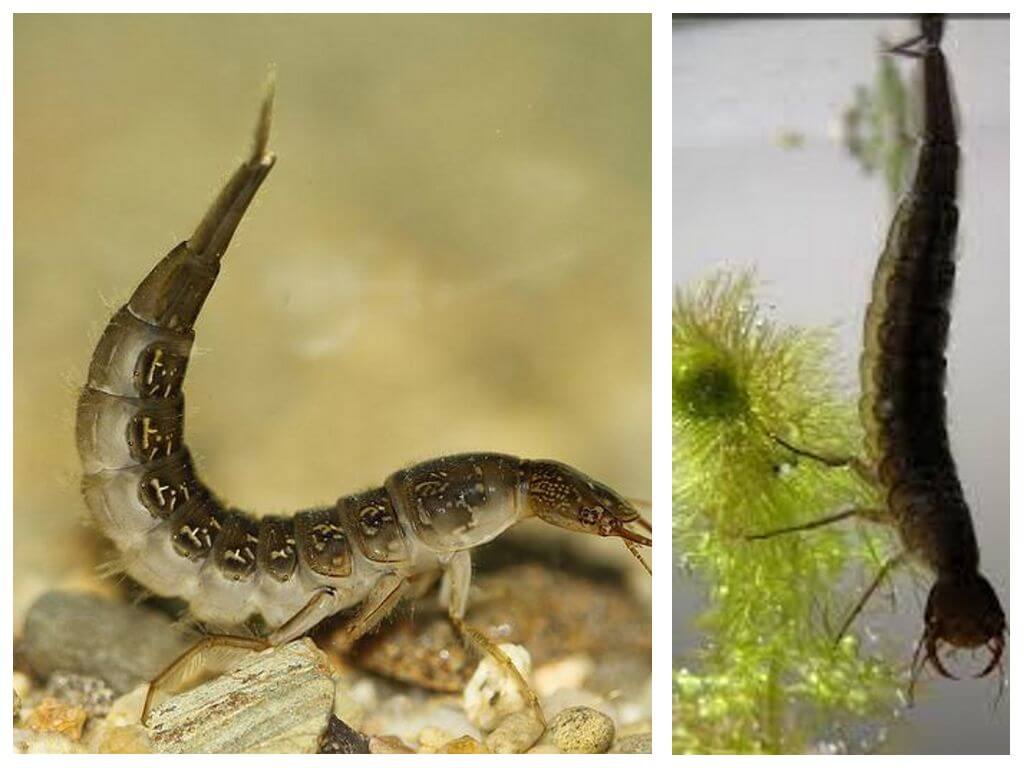Forelord bordered habitat and body shape
- Fringed fish
- Fringed fish
- Swimming larvae
- Swimming larvae
Fringed fish - one of the most famous and widespread members of the family of swimmers of the beetle order. Many consider the predatory beetle adapted to life in the aquatic environment to be the most malicious pest of fish farms. However, this statement is not entirely true. Plowun as a victim, he usually selects the weakest and sickest fry, playing essentially the role of orderly.
Features of the beetle predator
The description of the beetle beetle should begin with its main feature - the yellowish-brown border. This encircling the entire torso of the insect. The length of the body of the beetle does not exceed 3.5 cm, it can be divided into 3 parts: abdomen, thoracic and head. All these segments, smoothly moving into each other, are practically motionless. The oval streamlined shape of the body of the swimmer allows the beetle to easily cut the water without experiencing much resistance during swimming. The very same color of the bordered fish is mostly dark brown or black.
On the head of the swimmer, the dimensions of which are much wider in width than in length, are the senses in the form of antennae. The eyes of the insect are very large, they are also called faceted.
On a note!
Also on the head there is a mouth organ with well developed jaws, on which small palpi are located. Thanks to him, the predator recognizes the taste of prey. Therefore, it is necessary to take a swimming beetle with your hands very carefully, its bite is quite painful.
There are also wings on the body of the swimmer, thanks to which the insect flies beautifully. In males, they hide behind smooth hard elytra.In females, they are ribbed and serve as a shell that protects delicate parts of the body.
Three pairs of legs allow the beetle to move over land. The hind limbs, widened at the ends and covered with fine setae, the beetle uses as oars. With them he dissects the water, with ease float to the surface. But to descend to the bottom requires energetic movement. The fin is kept on the bottom with the help of two pairs of forelimbs, having special hooks at the ends. What an insect looks like can be seen in the photo.
The presence of special spiracles, located on the sides of the abdomen, makes it possible for the swimmer to breathe air. Exposing the back of the abdomen out of the water, the insect picks up air, after which the spiracles are involved.
A favorite habitat of a bounded swimmer is a lake or a pond, that is, a body of water where there is no strong current and a good supply of food. These bugs can be found in most European countries, in the Caucasus, in Japan. They are also widely used in Yakutia and in North America.
Life expectancy of swimming beetles ranges from 0.5-2.5 years.In nature, they usually live for about a year, but if they create the necessary microclimate at home, beetles can live up to 3 years. The main thing is to know what the swimmer eats.
Nutrition
These water beetles are ranked as real gluttons. Small insects and their larvae, snails, tadpoles, fry of fish - this is what the sea-fringed finder feeds on. With a shortage of small food, they are able to attack even a frog or a newt. A large accumulation of swimmers in a pond can significantly reduce the number of fish living in it.
Caviar set aside in shallow water is another favorite food of the swimmer. Having a very varied menu and a good appetite, the insect is able to eat a large amount of food. Because of its oversupply, it may even be difficult to rise to the surface of the water, no matter what the efforts of this, the floater does not apply. The beetle solves this problem by regurgitating excess food and emptying the body. As a result, the body weight is reduced, which contributes to a safe recovery.
Predator fish feel blood very well. So even her drop, trapped in a pond, can collect nearby insects. Packing attacks are also not excluded.
Interesting!
The larva of the water beetle is the most bloodthirsty in the world. During the day she is able to destroy about 50 tadpoles. The presence of a saber-curved sharp jaw gives it the ability to attack even large fish.
No less appetite and larvae of the swimmer, and this despite the fact that they do not have an oral organ. The larva grabs its prey with powerful jaws, after which it releases a special liquid into it. That she becomes the cause of paralysis of the victim. The next injection of digestive juice contributes to the digestion and liquefaction of the paralyzed victim, after which the prey is absorbed by small holes located near the jaw directly into the throat.
After such a meal, the larva cleans the residual fragments of the victim from its jaw with its feet, thereby preparing for a new attack. Surprising is the fact that the larvae are constantly experiencing hunger and are in search of food.
Breeding
The mating season for beetle beetles begins with the arrival of spring. Leaving their wintering place, they go in search of a suitable reservoir. Having found a partner, the male grabs her, and, holding the front paws, proceeds to fertilization.
It may happen that the female will be chosen by several males in a row.In this case, there is a high probability that it may simply suffocate, since the finisher breeds in water. After all, insects need periodic replenishment of atmospheric air they breathe. Therefore, if the mating process is delayed, the female will not have time to obtain the required amount of oxygen, as a result of which it will die.
After fertilization, the female with the help of ovipositor makes a depression in the aquatic plant, where the eggs are laid. In one season, she is able to lay about 1000-1500 eggs, of which after 8-40 days (depending on temperature) young offspring are born.
Sufficiently long (up to 10 mm) newly appeared larvae have a slender, worm-like body. Their main distinguishing feature is the large sickle-shaped jaws, therefore the larva bite is no less painful than the adult swimmer. On the head there are antennae, palpi and simple eyes. Like adult individuals, they swim and breathe oxygen perfectly, pushing the end of the abdomen to the surface.
After the larva grows up a little, it seeks to climb out onto dry land and dig into the coastal soil for pupation.For this, she builds a shelter for herself, sticking together lumps of dirt with the help of sticky saliva. During the week, it lies motionless in its cave until it turns into a pupa. After a period of 0.5-1 months, adult swimmers appear from the pupae, the body of which is painted white. Only black eyes and dark legs are noticeable against this background. After 8-10 days, the soft body is covered with a hard shell, which will be surrounded by a noticeable yellow-brown strip.

